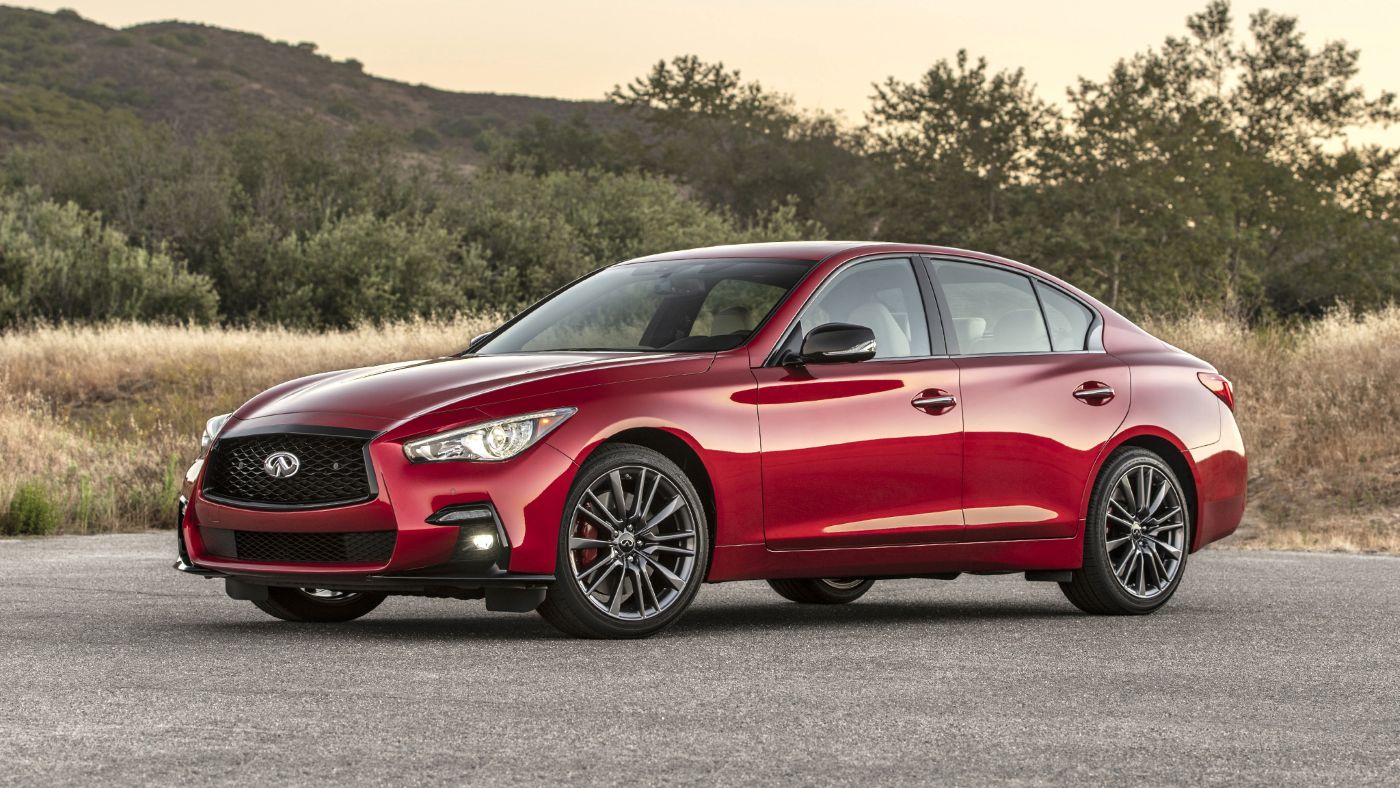Infiniti has always been an interesting brand. It promises luxury, performance, and a little edge, all without the sky-high price tags of its German rivals. To be fair, some Infiniti models really deliver on that promise.
They’re stylish, comfortable, and most importantly, built to last. But let’s be real—not all of them have aged gracefully. Some Infiniti cars have developed a reputation for being reliable workhorses, the kind you can drive for years without major headaches.
Others, unfortunately, have become known for constant issues, think failing transmissions, electrical quirks, and expensive repair bills that show up way too soon.
Infiniti Models That Run Long-Term
In this article, we’re breaking it down with five Infiniti models that hold up long-term and five that tend to cause more problems than they’re worth. Whether you’re looking to buy used, already own an Infiniti, or are just curious about how these cars really hold up, this guide will help you separate the keepers from the clunkers.
1. Infiniti G35 (2003–2007)
The G35 was a game-changer for Infiniti, bringing sporty performance with Nissan’s bulletproof 3.5L V6 (VQ35DE) engine. This model earned praise for its balance of power and reliability.
With regular maintenance, many G35s exceed 200,000 miles, thanks in part to its durable rear-wheel-drive platform and relatively simple electronics. U.S. owners appreciate its engaging driving dynamics and low-cost parts availability.
The sedan gets a refreshed look thanks to updates to the hood, grille, bumpers, side sills, taillights, and wheels. Power output for sedans now matches that of the coupes, 280 hp (an increase from 260) and 270 lb-ft of torque (also up from 260) on models equipped with an automatic transmission.
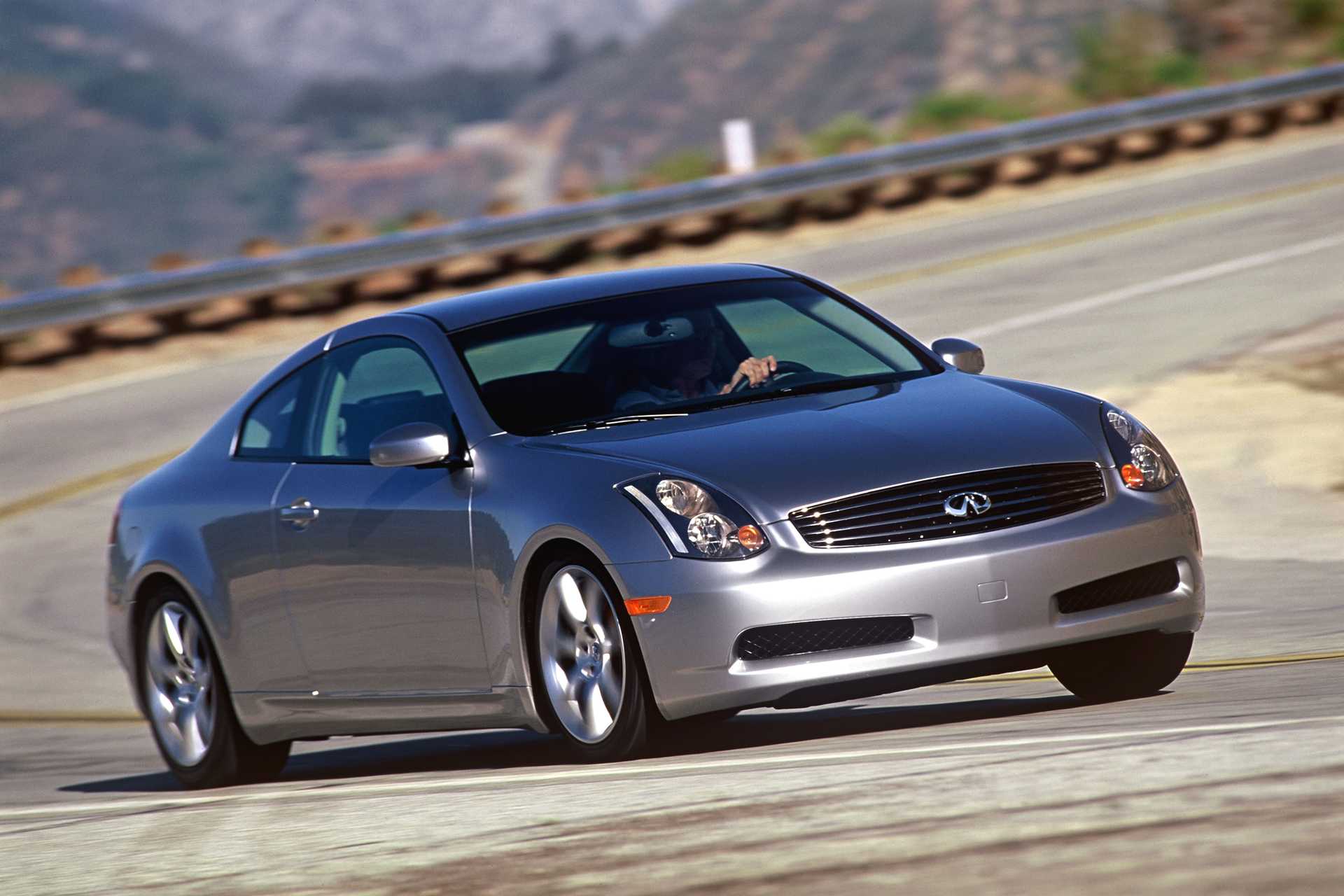
For those with a manual transmission, both coupe and sedan versions deliver even more power at 298 hp, though torque drops slightly by 10 lb-ft. Sedans featuring the sport suspension package now include 18-inch wheels and drilled aluminum pedals.
Across the entire G35 lineup, there’s a redesigned instrument panel and center console, with trim options in aluminum or wood. The manual transmission has also been refined for smoother shifting with less effort.
A new Sport trim for the coupe launches this year, bringing with it a stiffer suspension, a limited-slip differential, 19-inch forged alloy wheels, and drilled aluminum pedals. Strangely, however, “Brembo brakes are no longer available on manual-shift coupes.”
Also read: 5 Brands With Top Security Ratings and 5 With Zero Theft Prevention Focus
2. Infiniti QX60 (2016–2020)
The second-generation QX60, especially post-2016 models, improved vastly in transmission reliability after early CVT issues were addressed.
Built on a stretched Nissan Pathfinder platform, it features a proven 3.5L V6 and spacious 3-row layout.
With regular CVT fluid changes, this family SUV often lasts well over 150,000 miles. Many owners in suburban America praise it as a comfortable and reliable daily hauler.
For the 2018 model year, the QX60 introduces Rear Door Alert, now a standard feature designed to help drivers avoid leaving behind passengers, pets, or important items after turning off the ignition.
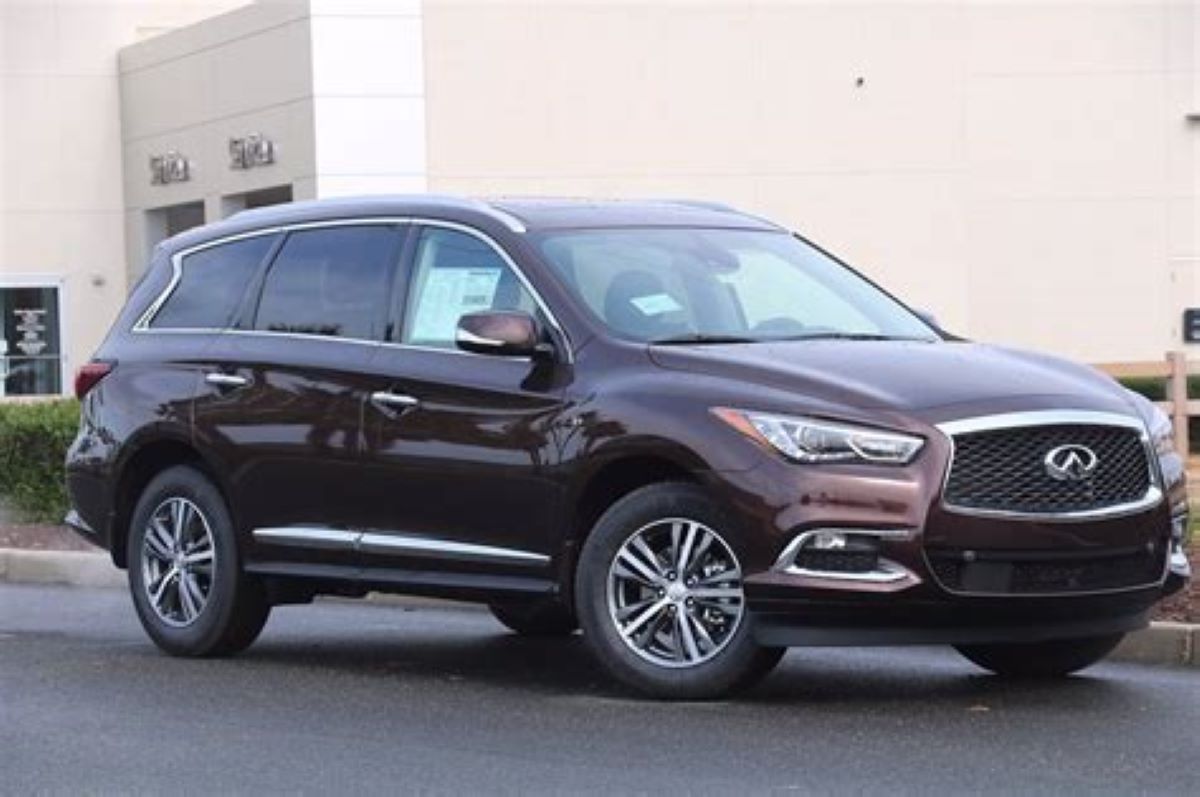
This system works by detecting if a rear door was opened before the drive began and can trigger an alert if it isn’t opened again once the trip ends. With its three-row seating, upscale interior, and a strong-performing V6 engine, the 2018 Infiniti QX60 presents itself as a smart, family-friendly option for getting around.
Its smooth ride and convenient third-row access continue to be standout qualities, and recent tweaks to performance give it the kind of responsiveness that complements its comfortable character.
It’s easy to see why some people compare the QX60 to a tall wagon or even a minivan with regular doors—and for those who want to avoid the minivan look, it’s a solid alternative.
3. Infiniti M37 (2011–2013)
The M37 pairs luxury with Nissan’s robust 3.7L VQ37VHR engine, a powertrain used in everything from the 370Z to the G37. With fewer turbochargers and high-end tech to worry about, the M37 is a solid choice for longevity.
Owners often report smooth highway performance and minimal issues even past 180,000 miles. It’s a hidden gem in the used luxury sedan market.
And to be fair, it’s not just about badge appeal. Sedans from Audi, BMW, and Mercedes-Benz have earned their reputations for being top-tier machines.
The 2011 M37 represents Infiniti’s latest effort to compete in this space, building on the sport-oriented legacy of the previous M sedan by blending in a more dramatic design and updated tech features.
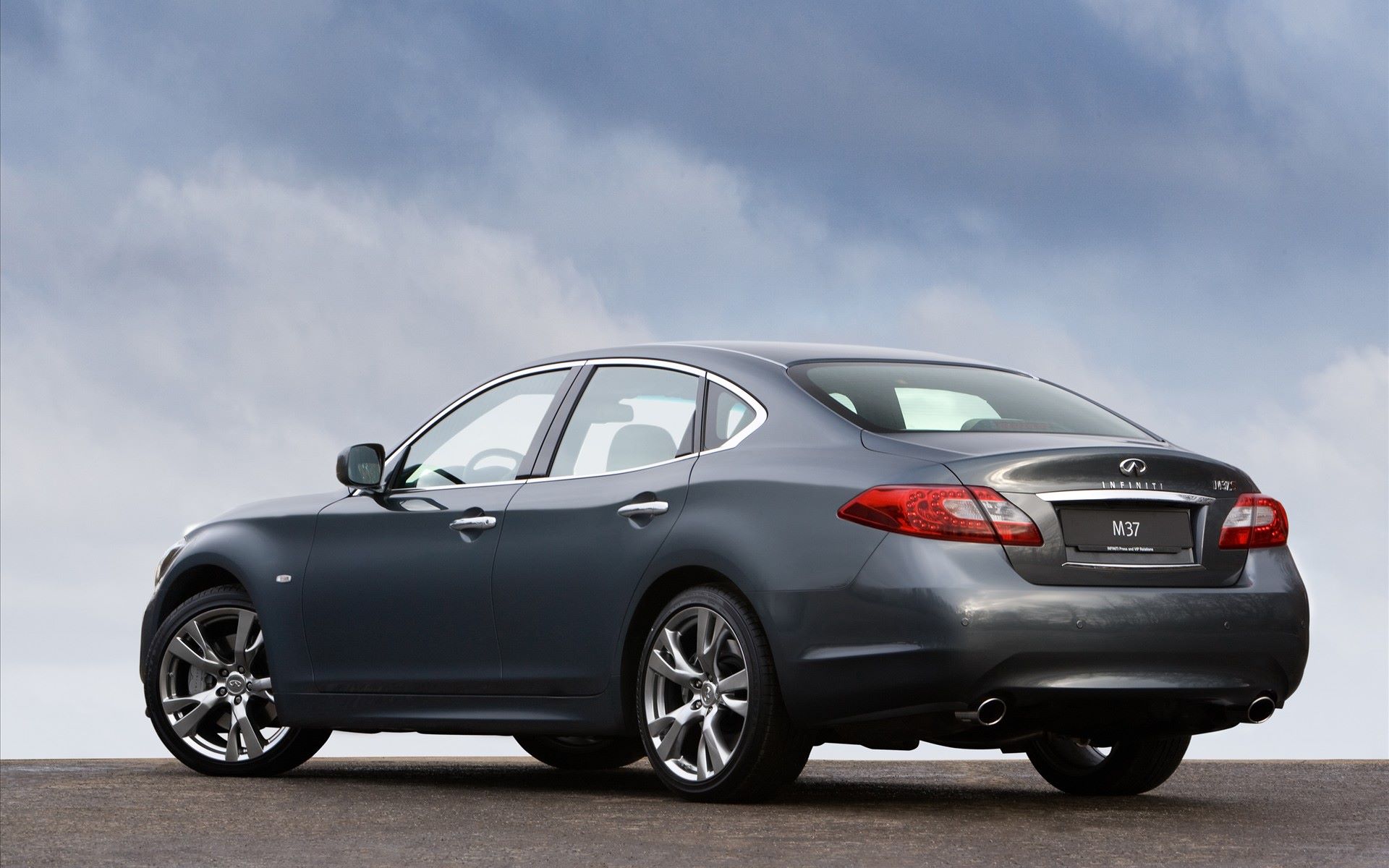
Sharing the spotlight with its V8-powered counterpart, the M56, the 2011 Infiniti M37 is a midsize luxury sedan that can be had in either rear-wheel or all-wheel drive. Much like the BMW 5 Series, the M is tailored for drivers who want engagement behind the wheel, not just comfort and style. And in that regard, this Infiniti holds its own.
Even though it carries the smaller of the two available engines, the M37’s 330-horsepower V6 tops the charts when compared to other six-cylinder rivals. Honestly, even if you have room in the budget for the M56, the M37’s performance might still sway you, it’s fast enough, and we’ve found its handling to be the sharper of the two.
For 2011, it’s not just the engines that have seen gains, the car itself has undergone a transformation. The M now wears a bolder, more muscular body that’s wider and longer than before, while a slightly lower stance gives it a sportier, more planted look.
4. Infiniti Q50 (2014–2017, 3.7L models)
Early Q50 models with the naturally aspirated 3.7L V6 are far more reliable than later turbocharged variants. This powertrain is time-tested and avoids the carbon buildup and turbo problems found in later engines.
The electronics are slightly more complex, but mechanically, this version of the Q50 is built to last ideal for those wanting modern luxury without turbo headaches.
The 2014 Infiniti Q50 marks more than just the arrival of a new generation for the brand’s well-regarded entry-level luxury sport sedan, it also introduces Infiniti’s revamped naming strategy.
From this point forward, all Infiniti cars will carry a “Q” designation, while the SUVs adopt the “QX” label. While the Q50 brings a new name to the table, it’s essentially the next evolution of the G37 and G25 that many drivers came to know and love.
Styling-wise, the 2014 Q50 is a clear step forward. It sports a more aggressive front end, smoother body contours, and subtle detailing along the sides, along with available 19-inch wheels.
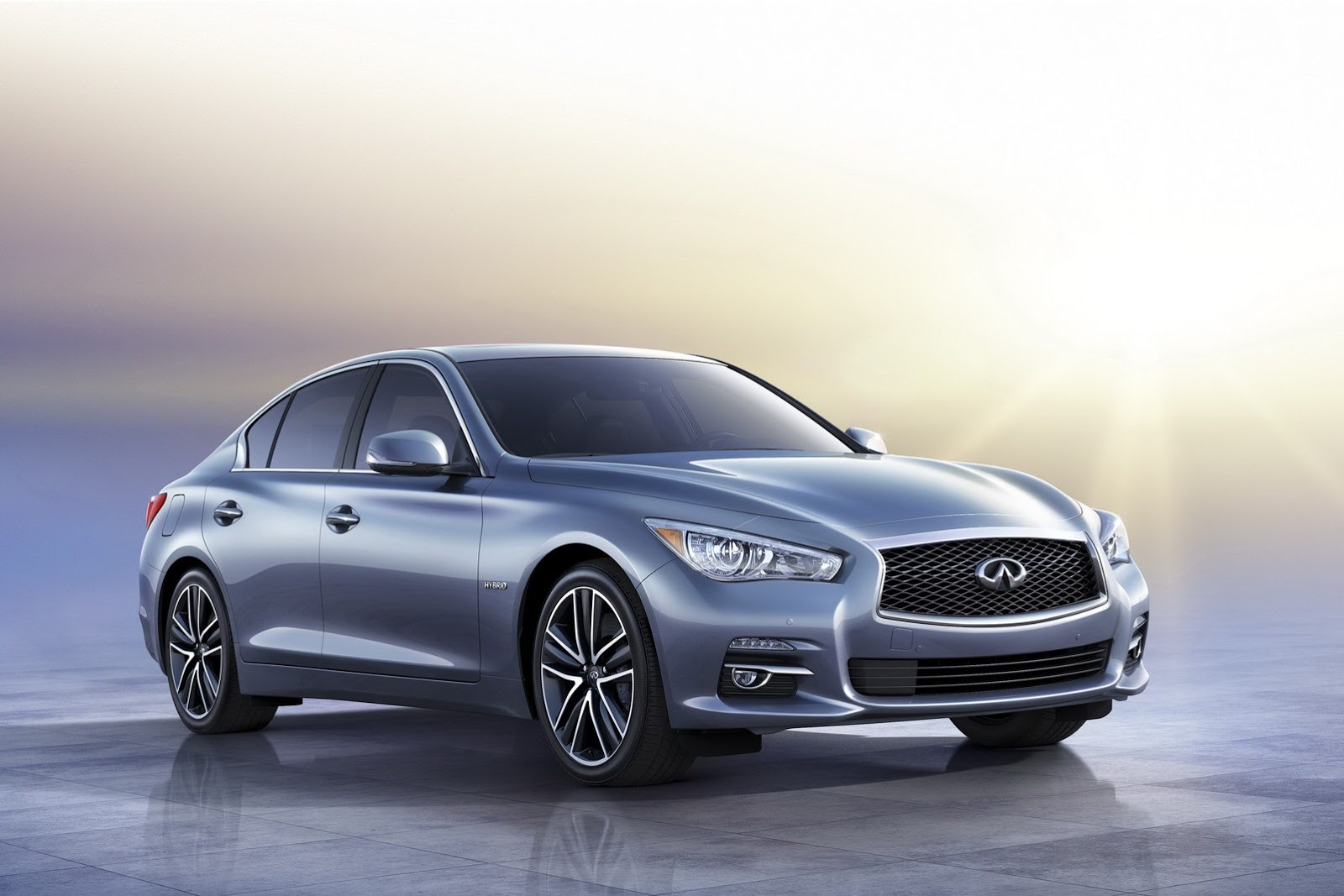
The result is a sedan that builds confidently on the G series legacy and fits the mold of a luxury sport sedan with ease. Inside, the cabin remains warm and upscale, but now leans even more into a refined luxury feel.
Under the hood, the Q50 comes equipped with a 3.7-liter V6 engine that produces 328 horsepower, sending power to the rear wheels by default, with all-wheel drive available as an option.
In addition to power and styling updates, the Q50 introduces several advanced technologies. “Direct Adaptive Steering is an optional (standard on hybrid), all-electric steering system that Infiniti says allows for quicker responses, improved steering feel and four different driver-selectable settings.”
Also Read: 5 Cars That Handle Emergency Stops Well and 5 That Feel Scary
5. Infiniti FX35 (2009–2012)
Known for its bold styling and sporty ride, the FX35 is a favorite among used SUV buyers looking for durability. Equipped with the 3.5L V6, it boasts strong reliability and decent towing power.
Despite its age, many FX35s on the road today are pushing well past 200,000 miles, especially in states with mild climates and owners who keep up with suspension and brake service.
The second-generation FX which includes the new V8-powered FX50, is built on an updated platform that shares its fundamental architecture with the Infiniti G35 and EX35. That shared DNA helps explain the FX’s surprisingly agile, carlike handling, which feels right at home for anyone familiar with its siblings.
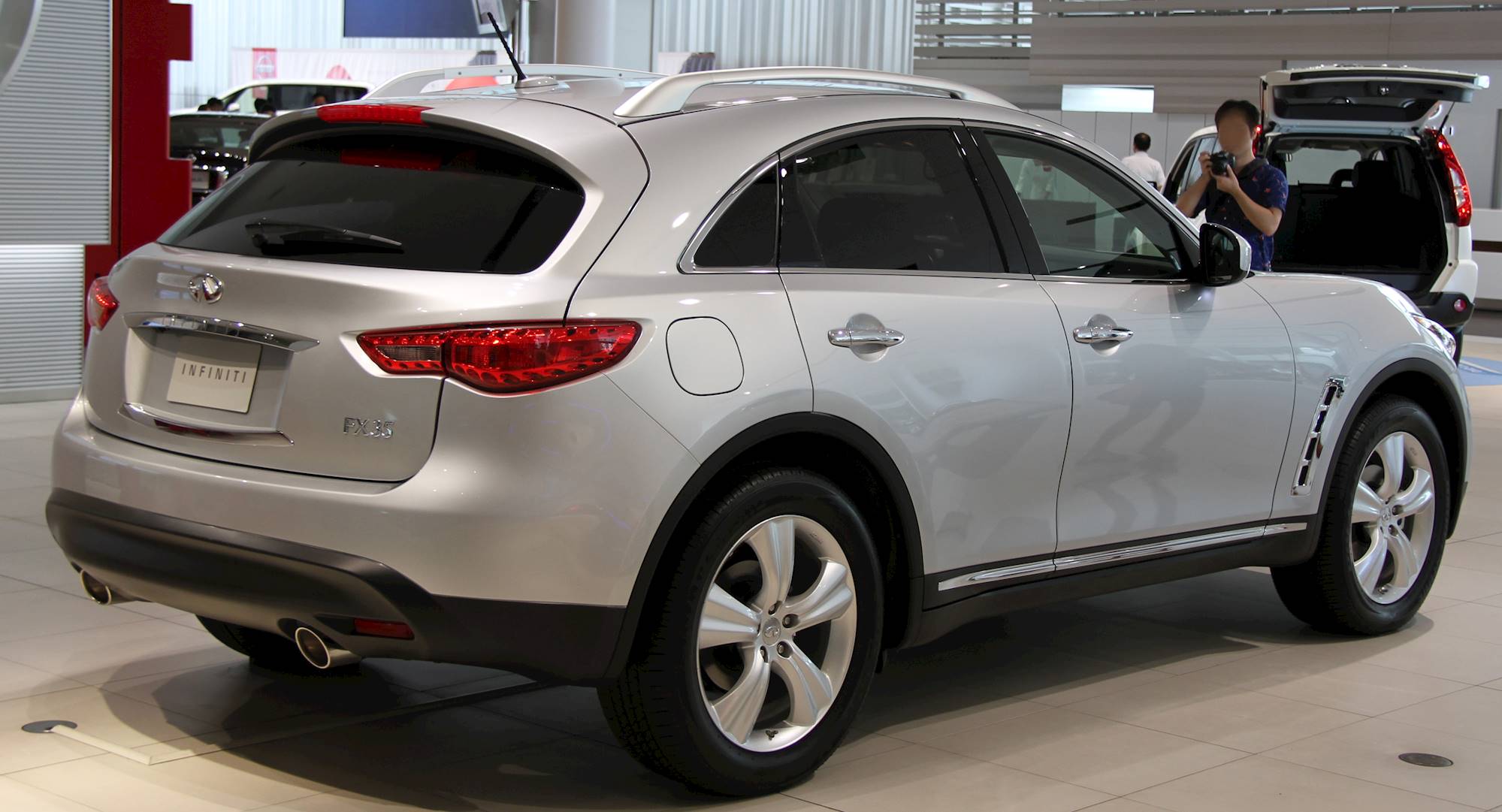
The five-passenger 2009 FX35 comes with a base price nearly $3,000 higher than last year’s version, and adding the premium tech packages can push the price up significantly. That higher cost might feel harder to justify when you consider the FX35’s modest passenger room and cargo space.
Several rivals in this price range deliver a similar level of luxury while offering greater practicality. The Acura MDX and Cadillac SRX, for example, both include seven-passenger seating and more room for cargo.
That said, neither comes close to matching the FX35 in terms of bold styling and dynamic performance. The only real competitor in this niche is BMW’s X6 xDrive 35i. While it offers comparable performance, it only seats four and has a starting price about $10,000 higher.
For buyers looking for a crossover that’s sporty, aggressively styled, and loaded with cutting-edge technology, the 2009 Infiniti FX35 makes a strong case for itself.
Infiniti Models That Prove Problematic
Not every Infiniti lives up to the luxury badge. While some models deliver solid performance and long-term reliability, others fall short, plagued by mechanical issues, costly repairs, and disappointing build quality.
In this article, we’re taking a hard look at the Infiniti models that have proven problematic, so you know exactly which ones to think twice about before buying.
1. Infiniti QX56 (2011–2013)
While powerful, the QX56 is notorious for timing chain tensioner failures, leaky gaskets, and steering issues. Repair costs can be steep due to its size and V8 complexity.
Many owners also report frequent electrical glitches with the infotainment system and sensors. Its high towing capacity and luxury status are appealing, but long-term ownership can be financially draining.
As with previous models, the QX remains the largest SUV in Infiniti’s lineup, but this time the focus shifts toward enhanced driving dynamics, added refinement, and better fuel efficiency.
In contrast to the outgoing generation, which shared its underpinnings with the U.S.-built Nissan Armada pickup-based SUV, the new QX56 now rides on the platform of the Japan-built Nissan Patrol. This purpose-built all-wheel-drive utility vehicle is Nissan’s response to the Toyota Land Cruiser and brings with it noticeable improvements.
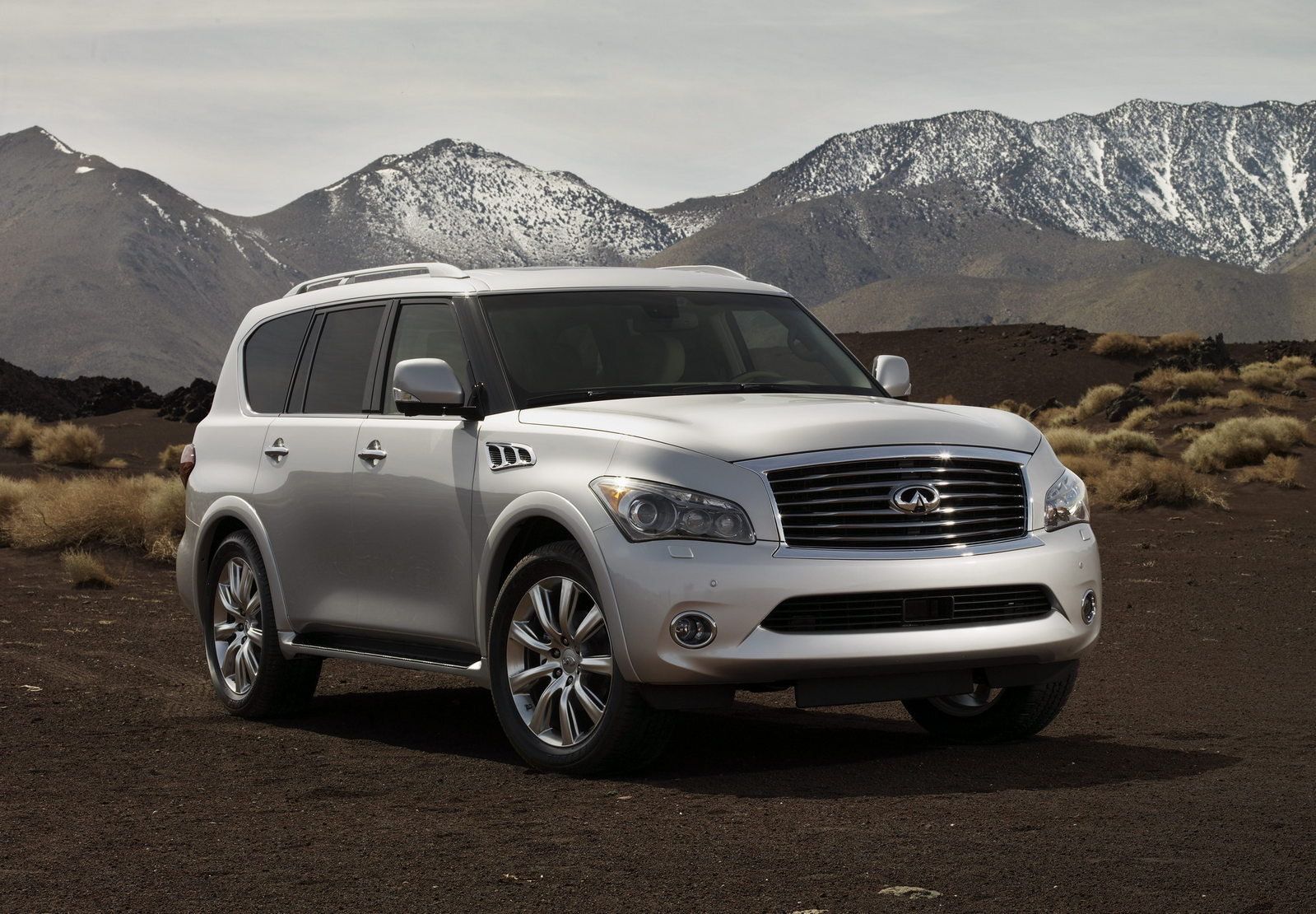
For U.S. buyers, the new architecture means a roomier, more comfortable cabin and a wide array of advanced features. Among them is the innovative Hydraulic Body Motion Control system, available as an option, which links the shock absorbers to help reduce body roll, brake dive, and squat under acceleration.
Step inside, and you’ll find major upgrades throughout the interior. The cabin now feels more akin to a private jet than a traditional SUV, with high-end materials and meticulous craftsmanship setting a luxurious tone.
The QX is also packed with advanced technology, offering features that can take some of the work off the driver’s hands. It still comes with three rows of seats and stands out in its class with a cargo capacity that surpasses many of its rivals.
2. Infiniti QX60 (2013–2015)
Early model QX60s suffered from problematic Jatco CVTs that are prone to overheating and failure, especially under stress or when towing. The issues were significant enough to prompt class-action lawsuits and a reputation hit.
Many U.S. owners report transmission replacements before 100,000 miles making this a model to approach with caution unless full service history and updates are confirmed.
The 2014 Infiniti QX60 looks identical to last year’s JX35—which makes sense, considering it’s essentially the same vehicle. Aside from some minor updates to feature availability and the introduction of a hybrid variant, not much has changed.
The new name comes as part of Infiniti’s revamped model naming strategy: “‘QX’ denotes an SUV and the numbers following indicate where a given model stands in Infiniti’s lineup (a higher number means a higher standing).”
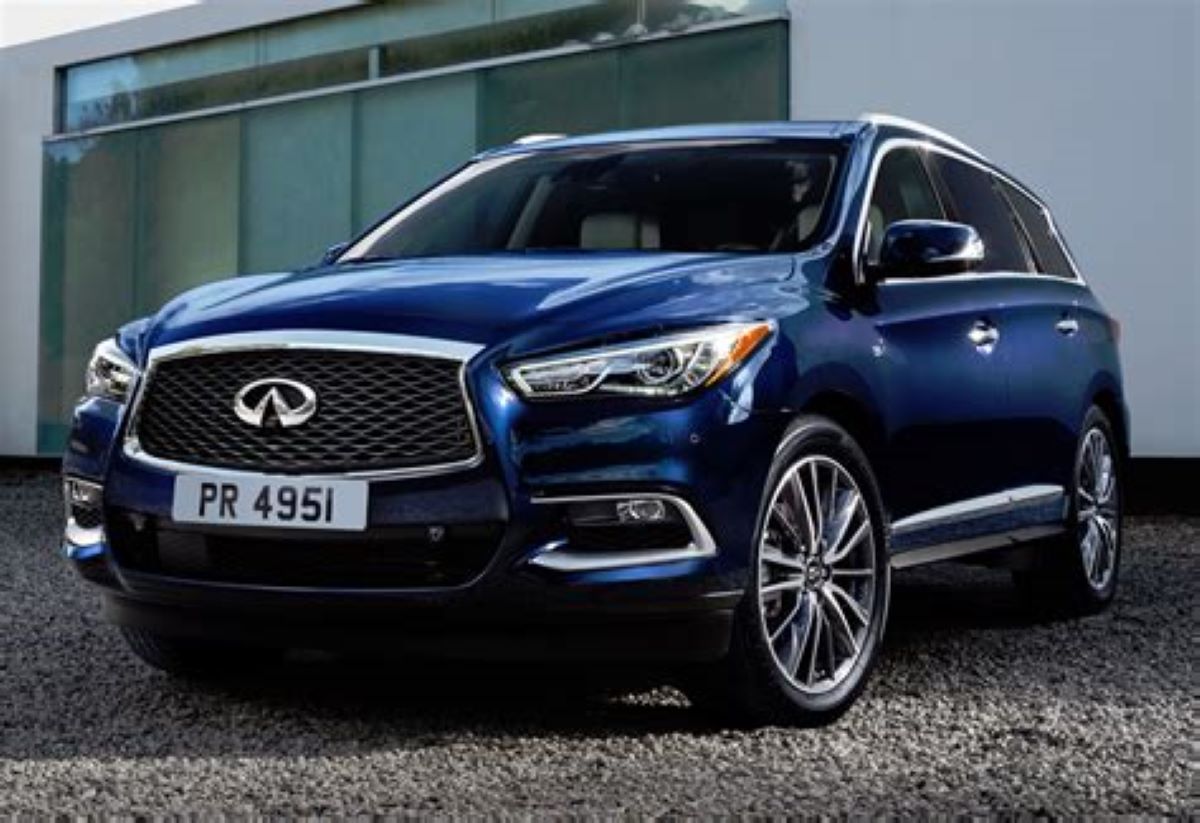
Much like the JX, the QX60 shares its platform and mechanical underpinnings with the Nissan Pathfinder. The key differences between the two are found in styling, interior appointments, and available features.
The QX60 delivers a more upscale look and feel both inside and out, and more importantly, it excels as a family-oriented SUV. It’s a strong choice for parents who need a premium three-row crossover that’s both practical and comfortable.
Inside the spacious cabin, the QX60 accommodates up to seven passengers and is designed to seat adults in all three rows. The second-row seats recline and slide nearly six inches fore and aft, offering generous legroom and making it easy to access the third row.
Interior materials are of high quality, lending the cabin a refined, luxurious atmosphere. As expected in this class, the QX60 comes packed with advanced tech and safety features, including systems that help prevent “blind-spot collisions or incidents while backing up.”
3. Infiniti QX50 (2019–2021)
Despite being a modern compact luxury SUV, the second-gen QX50 with the 2.0L VC-Turbo engine is plagued with issues ranging from turbo lag and carbon buildup to poor transmission behavior.
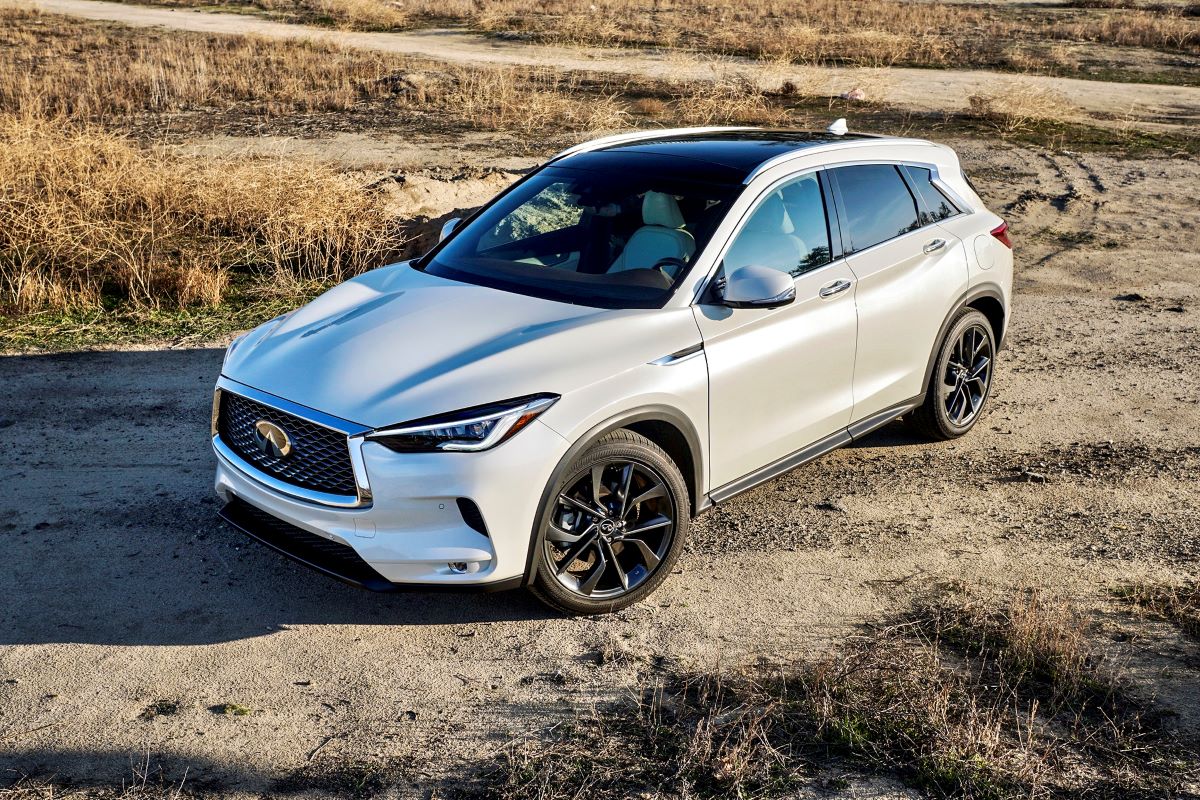
Owners have also reported stalling, oil consumption problems, and frustrating drive-by-wire delays. The advanced engine design may be innovative, but real-world durability hasn’t lived up to expectations.
4. Infiniti M35 Hybrid (2012–2013)
Hybrids can be a great option for efficiency, but the M35 Hybrid’s complexity makes it a poor choice for longevity. Owners have reported hybrid battery failures, electronic gremlins, and jerky transmission behavior.
The cost of battery replacement or inverter repairs can easily exceed the vehicle’s value after 10 years. It’s a risky buy for anyone looking for long-term reliability.
The 2019 version of the QX50 is slightly shorter than its predecessor but significantly wider and taller. Ground clearance has also been raised by about two inches, giving the vehicle a more planted, aggressive appearance.
These updated proportions have made room for a completely redesigned interior. Rear passengers now enjoy more legroom, and the second-row seats can slide, recline, and fold flat to accommodate larger cargo loads.
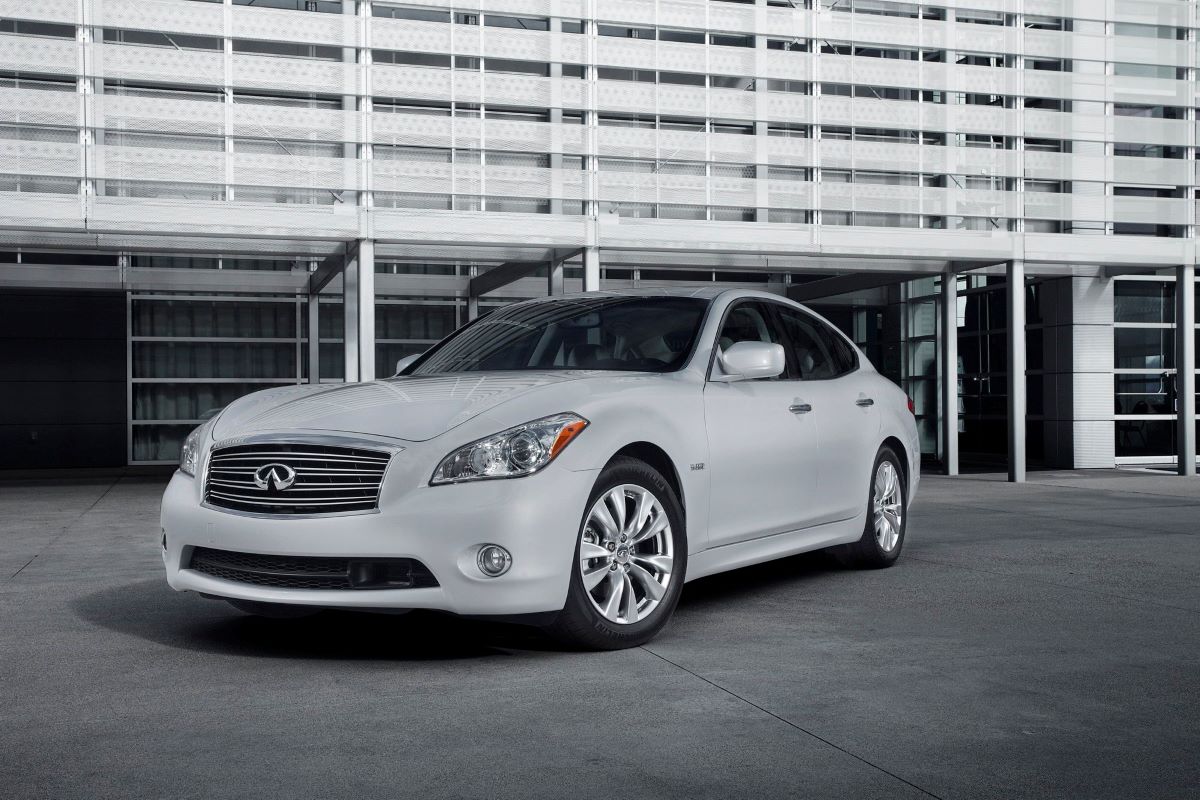
In terms of cargo space, there’s now “a total of 31.4 cubic feet of space behind the rear seats, nearly 13 more cubic feet than before.” Up front, the QX50 gets an all-new cabin and Infiniti’s most current infotainment setup. The dual-screen layout assigns navigation functions to the top screen, while the lower screen controls entertainment and climate systems.
Aside from this tech upgrade, the rest of the interior design echoes the style of Infiniti’s Q50 sedan, complete with sweeping lines and the familiar twin-screen interface.
However, the biggest change for 2019 lies under the hood. Previous QX50s came with a V6 engine, but this new model features a turbocharged four-cylinder equipped with breakthrough variable compression technology.
While this engine produces less peak horsepower than the old V6, it delivers more torque, and that torque is spread more evenly across the rev range.
“The result, Infiniti promises, is quicker acceleration around town and higher fuel economy.” Unfortunately, after putting the QX50 through its paces, it’s the new powertrain that proves most underwhelming.
The continuously variable automatic transmission struggles to respond consistently, dulling the potential performance benefits of the innovative engine. Real-world fuel economy also shows only modest gains compared to other rival SUVs equipped with four-cylinder engines.
5. Infiniti QX70 (2014–2017, 5.0L V8 models)
While the V6 versions of the QX70 (formerly FX50) are reliable, the V8 models suffer from high oil consumption, cooling system issues, and expensive maintenance.
A new Limited package replaces last year’s Deluxe Touring option, bringing some cosmetic enhancements. Aside from that, the 2017 Infiniti QX70 carries over unchanged.
Some things improve with age, like fine wine or classic art. Others, like leftover broccoli or yesterday’s chart-toppers, do not. The 2017 Infiniti QX70 falls somewhere in the middle. Debuting nearly a decade ago under the FX35 badge, it’s impressive that the QX70 has managed to remain one of the sportier offerings in the luxury SUV segment.
Still, it’s facing much stiffer competition these days, and the QX70 struggles to distinguish itself. Its aging infotainment system, controlled by a dash-mounted interface, has been surpassed by more modern rivals, and the overall interior no longer feels as cutting-edge.
Other shortcomings include a smaller-than-average rear seat, a noticeably firm ride, and a bundled options setup that forces buyers into high-priced packages—“if you want items such as adaptive cruise control, the price climbs past $58,000.”
Shoppers looking for a similar driving experience will find newer alternatives like the BMW X6, Mercedes-Benz GLE Coupe, and Porsche Macan. These rivals offer comparable performance but come with more powertrain choices and modern technology.
All 2017 Infiniti QX70 models come standard with safety features such as antilock brakes, stability and traction control, front-seat side airbags, full-length curtain airbags, and active front head restraints.
The optional Premium package adds an around-view camera and front/rear parking sensors, while the Technology package includes lane departure warning and lane keeping assist, as well as “a forward collision mitigation system with automatic braking.”
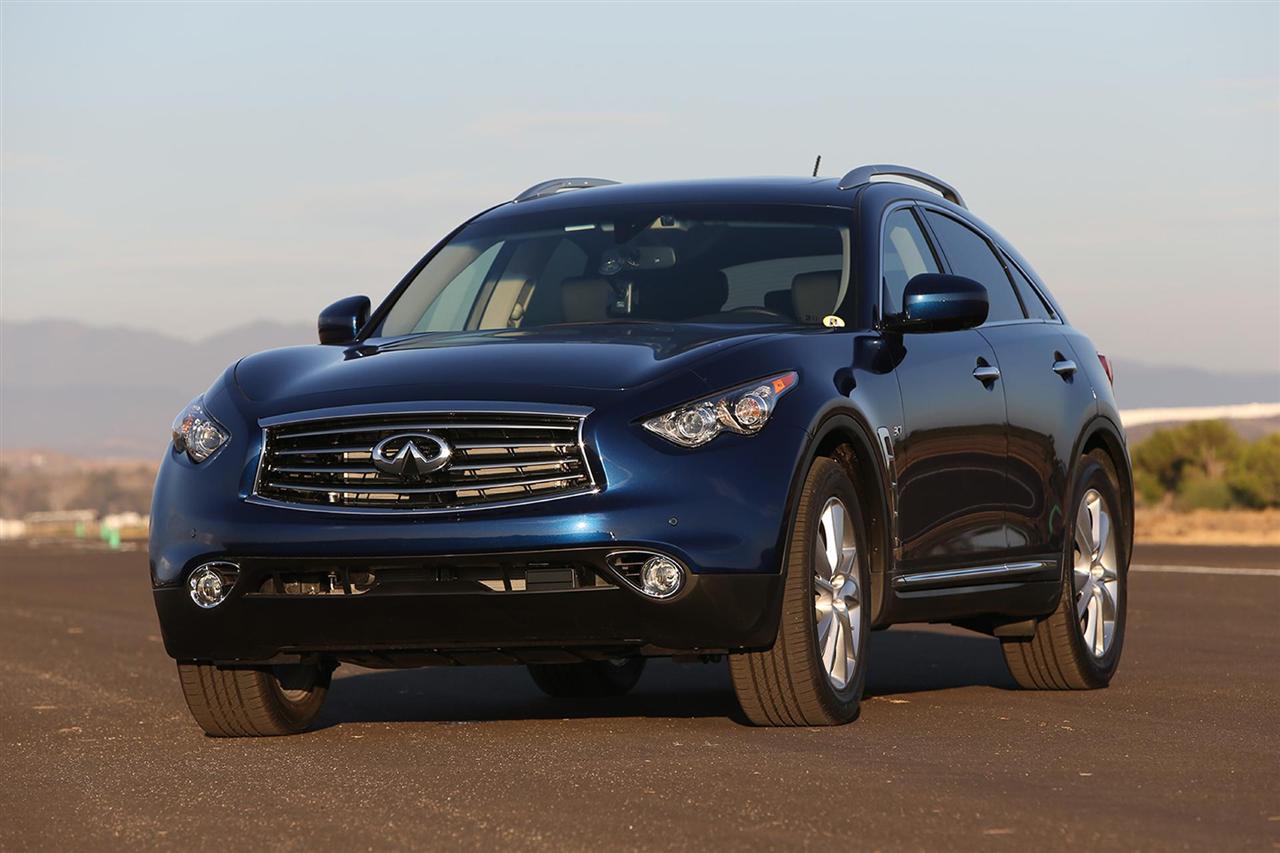
In crash testing by the Insurance Institute for Highway Safety, the QX70 earned top scores of Good in the moderate-overlap front-impact test and for its seats and head restraints.
Even with its age starting to show, the 2017 QX70 still puts in a solid performance. Acceleration is strong, and its sport-tuned suspension allows it to handle corners with ease.
Unfortunately, the firm suspension, especially when paired with the available 21-inch wheels, can lead to a harsh ride. On the highway, engine and wind noise are well-suppressed, but tire noise becomes noticeable at higher speeds.
Braking is adequate, with the QX70 stopping from 60 mph in a respectable 120 feet. However, the soft pedal feel and long travel may leave some drivers less than confident. While these aren’t deal-breaking flaws, they’re reminders that many newer rivals offer a more refined driving experience that may appeal to a broader audience.
Owners report valve cover leaks, cracked radiators, and expensive emissions-related repairs. The added performance doesn’t justify the added headaches unless you’re prepared for premium fuel and premium repairs.
Infiniti vehicles can be rewarding to own, offering luxury features without the German price tag but longevity depends heavily on the model and powertrain.
Older models with naturally aspirated V6 engines tend to be the most reliable, while newer turbocharged or hybrid variants have shown troubling patterns of issues.
Also Read: Top 10 Cars That Stay Worry-Free After Warranty Ends Offering Unmatched Reliability
For U.S. buyers aiming for a luxury vehicle that won’t turn into a money pit, sticking with proven models like the G35, FX35, or M37 is a smart move.
Those eyeing newer or more tech-laden options should do thorough research and consider extended warranties or certified pre-owned options.

